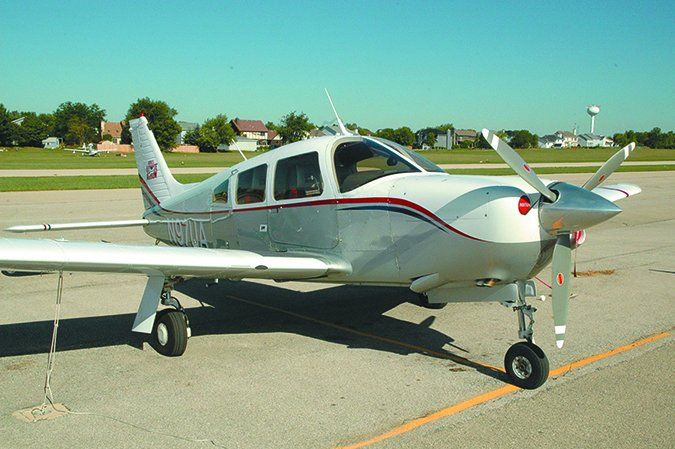While experience has taught us that there’s no free lunch in aviation, especially when speed is involved, we wanted to know if there were any ways to make our airplanes faster without having to spend cubic bucks. We surveyed the speed mod market—it’s vast—and found that while there are some high-dollar mods out there, it may be possible to up the cruise speed and climb rate of your airplane by 5 to 10 percent without going broke. Here’s what we found.
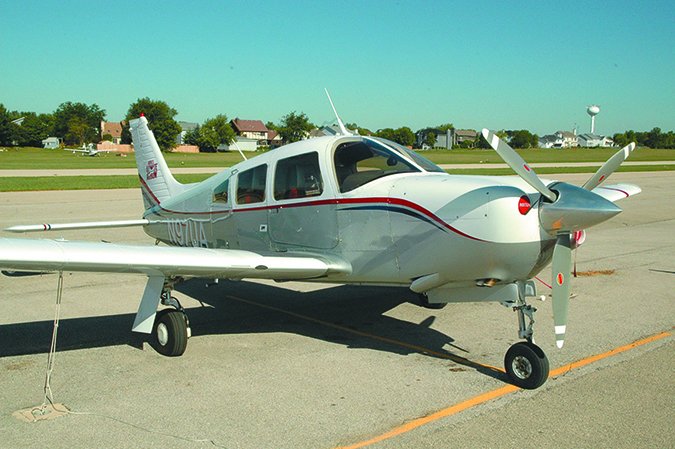
Realistic Expectations
Any attempt to make an airplane go faster comes up against the cruel laws of squared functions as applied to aerodynamic drag—to make an airplane go twice as fast, you have to have eight times as much power. That’s the bad news. The good news is that general aviation manufacturers didn’t always optimize their designs for speed. At some point during development diminishing returns set in and they said, “That’s good enough,” froze the design, went through certification and put it on the market. For a number of legacy airplanes from Piper, Beech, Cessna, Mooney and Grumman American, that means for under $5000 it may be possible to improve your airplane’s performance enough that you notice it. Most of the aftermarket mods are designed to reduce drag—airframe and/or cooling—but two are exhaust system mods that increase engine power output.
Virtually all of the mods we looked at required Supplemental Type Certificate testing. That does not mean they meet their advertising claims for improved performance; it just means the FAA found that the aircraft’s overall level of safety, structural integrity and its stability and control were not degraded by the mod. We also noted that virtually all of the mod shops advertised cruise speed increases in miles per hour rather than knots because the numbers look bigger. We keep waiting for them to switch to kilometers. We recommend an appropriately jaundiced eye when looking at advertising claims. We also note that if one mod for your airplane is said to increase its speed by 3 MPH and another by 4 MPH, putting both of them on probably won’t bump the speed by 7 MPH—speed increases per mod are based on just that mod on the stock airplane.
Knots 2U
Jim Bradshaw, the late founder of Knots 2U, made the Piper Twin Comanche some 20 MPH faster with speed mods he designed. The company eventually expanded into making speed mods for a wide variety of singles and twins and acquired Met-Co Aire, maker of the Hoerner wingtips that have demonstrated performance benefits.
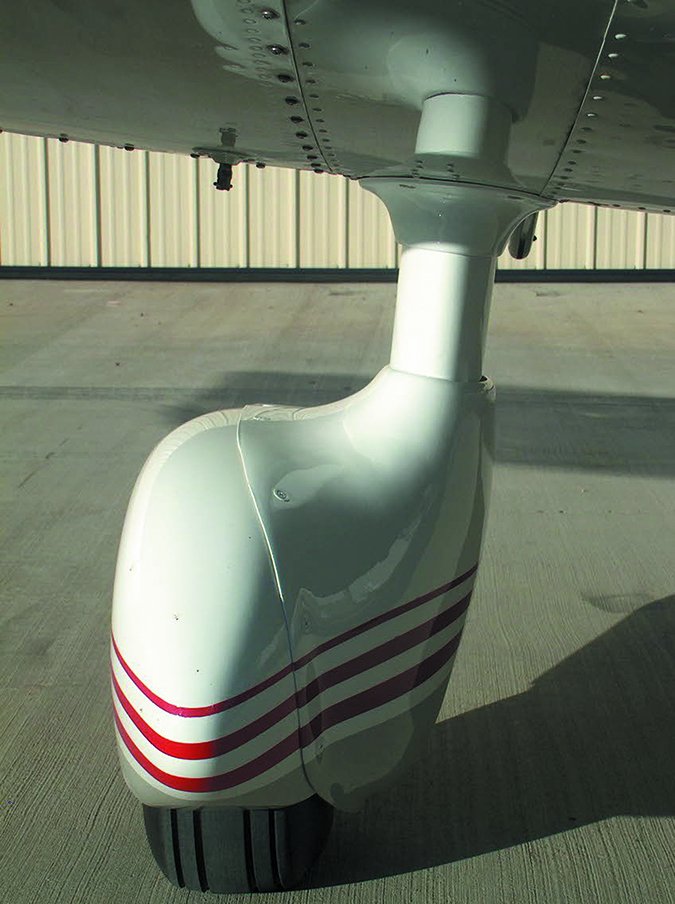
The Hoerner wingtip was developed by Dr. Sighard Hoerner for military aircraft. It was applied to civilian aircraft by Met-Co Aire and is designed to reduce the strength of wingtip vortices generated by high-pressure air under the wing moving outboard over the wingtip. The tip vortices create turbulence and drag. The shape of the Hoerner wingtip reduces tip vortices in a manner not unlike a winglet, although not as effectively.
Knots 2U advertises benefits of the Hoerner wingtip that include—depending on aircraft model—3-5 MPH cruise speed increase, 60 FPM rate of climb increase, 1-2 percent greater range, 4-5 MPH reduction of stall speed and reduced takeoff distance. We note that some manufacturers have made Hoerner wingtips standard equipment on their airplanes.
Knots 2U offers Hoerner wingtips for numerous models of the Bonanza and Baron, Piper singles and twins and Cessna singles. Prices start at $640, with the most expensive we saw being for the Bonanza and Baron at $944.
One of the most effective mods developed by Knots 2U was more streamlined gear strut fairings for fixed-gear airplanes. As Cirrus and Columbia showed the world, an airplane with properly faired landing gear can be smoking fast. For the Piper Cherokee line, Knots 2U offers its main-gear wheel fairings for $1095 and advertises a 3-5 MPH speed increase. Installation time is 8-9 hours.
For fixed-gear Cessnas, Knots 2U sells fairings for the mains ($2048 a set) and nosegear ($1276). It advertises a 2-4 MPH speed bump for the nosegear and 2-3 for the mains. Installation time for all three is about 10 hours.
There’s also a cleanup for the Piper Arrow gear—a $634 gear lobe fairing attached to the underside of the wing behind the main landing gear that cleans up the airflow and reduces drag. Installation time is 3.5 hours and is advertised to boost cruise speed by 3-5 MPH.
Finally, for Piper flap hinges there’s a $297.60 set of fairings that only take an hour to install and add 1-2 MPH to cruising speeds.
LoPresti Aviation
Known as “Mr. Fast” in general aviation, the late Roy LoPresti was largely responsible for cleaning up and speeding up the Grumman American singles and the aerodynamics of the Mooney 201 when he worked for those companies. Going on to form his own company, he created numerous speed mods for Pipers, Mooneys and Grumman Americans that continue to be offered by LoPresti Aviation.
Much of LoPresti’s aerodynamic cleanup work involved cowlings—outside and in—reducing cooling drag and the aerodynamic drag of the cowling itself.
LoPresti Aviation offers cowling mods for most Piper singles, the Grumman American Cheetah and Tiger and Mooney M20E, F and J. Speed increases advertised range from 5 MPH on the Cheetah to 15 MPH on the Comanche 260. However, cowling mods aren’t something we consider to be a budget speed mod—we were quoted $16,995 plus a 55-hour installation for a 5 MPH speed bump on a Cherokee Arrow. The new cowling is made of carbon fiber, has a hinged access door and a cowl flap for better cooling airflow. According to Curt LoPresti, one of the major selling points is that it looks great.
Looking at the more modestly priced LoPresti mods, we note that its best performer is its more aerodynamic wheel pants for fixed-gear Pipers. It advertises up to 10 knots extra speed for a Cherokee 180. The main gear fairings are $4995 for the set and a nosegear fairing goes for $2495.
Piper flap hinge fairings are $1495 and give as much as 3 MPH more speed. For the Piper Arrow series, LoPresti offers a wheel well fairing that is advertised to give an extra 4 MPH for $899.
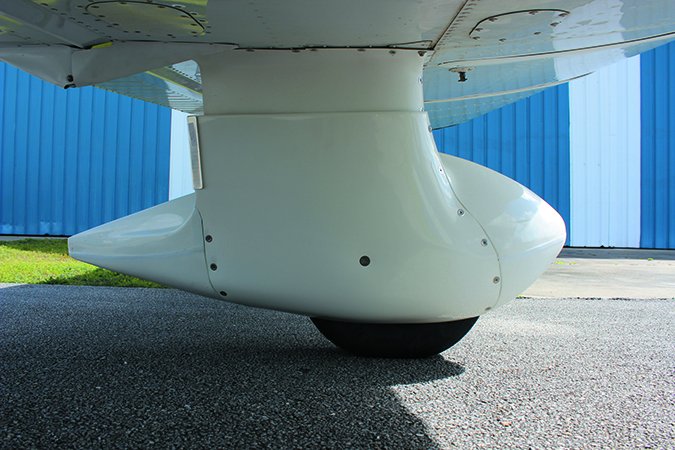
Laminar Flow Systems
Advertising up to a 15 MPH cruise speed increase, Laminar Flow Systems sells speed mods for the Piper Cherokee, Lance, Saratoga and Seneca lines.
The main players in terms of speed per mod from Laminar Flow Systems are two types of main gear strut fairings for fixed-gear Pipers. Priced at $1100 for the pair, Fancy Pants are main gear fairings that enclose the exposed gear struts and brakes and are more aerodynamic than Piper wheel pants. They fit over the existing Piper wheel pants, are riveted into place and have an access and service door so that they do not have to be removed for inspections and service. Installation takes 4-6 hours and speed gains of up to 10 MPH are advertised. We appreciate that Laminar Flow Systems warns potential buyers up front about shipping costs—wheel pants are bulky, making for shipping that can run as high as $300.
The second type of main gear fairings offered by Laminar Flow Systems is referred to as SpeedPants. SpeedPants are built to order, so there is an eight-week lead time.
The price is dependent as to whether the airplane has strut fairings—$4270 a pair for airplanes with strut fairings and $3670 for those without. Laminar Flow Systems says that its tests showed a 10.5 MPH speed gain over bare wheels and 8 MPH over original Piper wheel pants on pre-1978 airplanes and 11 MPH over bare wheels and up to 6 MPH over Piper wheel pants on later-model airplanes.
The nosegear fairing sold by Laminar Flow Systems is priced at $287, although a $50 discount is offered if purchased with a pair of main gear fairings. The nosegear fairing covers the lower nosegear strut, reducing drag, according to the company, and increases speed up to 3 MPH. It is not a nosegear wheel pant, just a fairing around the strut.
For $450, Laminar Flow also offers flap hinge fairings and advertises a speed increase of up to 2.5 MPH.
The exposed rivets and screws along the fuel tanks of PA28s and PA32s have long been a source of complaint for pilots wanting more speed. Laminar Flow Systems sells a kit to fair and smooth the area. Priced at $832, it is advertised to increase speed by up to 4 MPH.
For $598, owners of Piper Arrows, Lances, Senecas and gear-up Saratogas can buy a wheel well fairing kit that can increase cruise speed as much as 4 MPH.
Maple Leaf Aviation
Targeting the Cessna 172, 177, 177RG, 180, 182 and 185, Maple Leaf Aviation offers a line of speed mods for those fixed-gear Cessnas although its emphasis is on the Cessna Cardinal and Cardinal RG. We spoke with Paul Millner, head of Cardinal Flyers Online, who told us that many of the mods created by Maple Leaf Aviation’s principal, Roy Sobchuk, were made specifically for the Cessna Cardinal line and that members of the organization spoke of the effectiveness of the speed mods.
The big dog of Maple Leaf’s Cardinal mods is a cowling cover for the 1968 and 1969 Cardinal. It corrects a high drag area of the airplane to more closely match the design of the 1970 and later Cardinals, improving airflow, rate of climb and cruise speed. Cruise speed is advertised to increase by 8-12 MPH and, according to Millner, CFO members who have bought the $379 kit say that on short airstrips they no longer worry about hitting the trees on takeoff.
To combat the high-drag nosegear strut on the 172, 177 and 182, Maple Leaf Aviation offers what it calls Fancy Pants, a fairing that fits between the top of late-model wheel pants and the underside of the cowling.
For the 177 and 182 a 6-8 MPH speed gain is advertised; for the 172 it’s a 3-5 MPH gain. The price is $659. On the Cardinal, Cessna had three different wheel pant designs—Fancy Pants is only compatible with the most recent—which were the lowest drag.
Maple Leaf Aviation also sells a duplicate of the late-model Cessna wheel pants for use with the Fancy Pants mod. The price is $275.
Even though Cessna faired in the main landing gear legs of the Cardinal, the way it was done turned out to create a high drag area on the airplane. Maple Leaf Aviation offers a kit that includes low-drag, extended chord gear leg fairings that are oriented at a better angle of attack, brake fairings and fuselage fairings. For $919, the kit is advertised to increase cruise speed by 3-4 MPH.
Maple Leaf also offers brake fairings for the 177 and 182 that, in conjunction with late-model main gear wheel pants, are advertised to increase speed by 2-3 MPH. They are priced at $329. They are included in the Cardinal main landing gear leg kit.
Power Flow Systems
While most speed mod shops get additional performance via drag reduction, two that we surveyed do so by modifying the engine exhaust system to allow the engine to develop more power. The length of each exhaust tube is customized to cause the low pressure traveling down the tube behind an “exhaust puff” to reach the collector where the tubes join in time to suck out the exhaust from the next cylinder.
Power Flow Systems offers its exhaust mod for the Aviat Husky, Cessna 170, 172, 175, 177 and 177RG, Diamond Star, Beech 19 and 23 series, Grumman Americans and four-cylinder Maules, among others. Prices vary with engine size, but start at around $5000 plus installation. Speed gains are reported to be from 5-10 MPH.
Leading Edge Exhaust
Originally a company that did exhaust system repairs, Leading Edge Exhaust Systems of Anchorage, Alaska, wanted to design systems that were more robust than OEM equipment and allow the engine to develop more power. It has developed its systems to maintain a laminar flow and reduced back pressure, facilitating scavenging the products of combustion, improving volumetric efficiency and horsepower.
The systems are available for the Cessna 180 and 200 series and the Piper PA12, 18 and 20/22. Power increase is approximately 10 percent. While Leading Edge advertises cruise speed gains, it does not make specific number claims. Prices start at $4395 for the 150-HP engine in the Piper PA12.
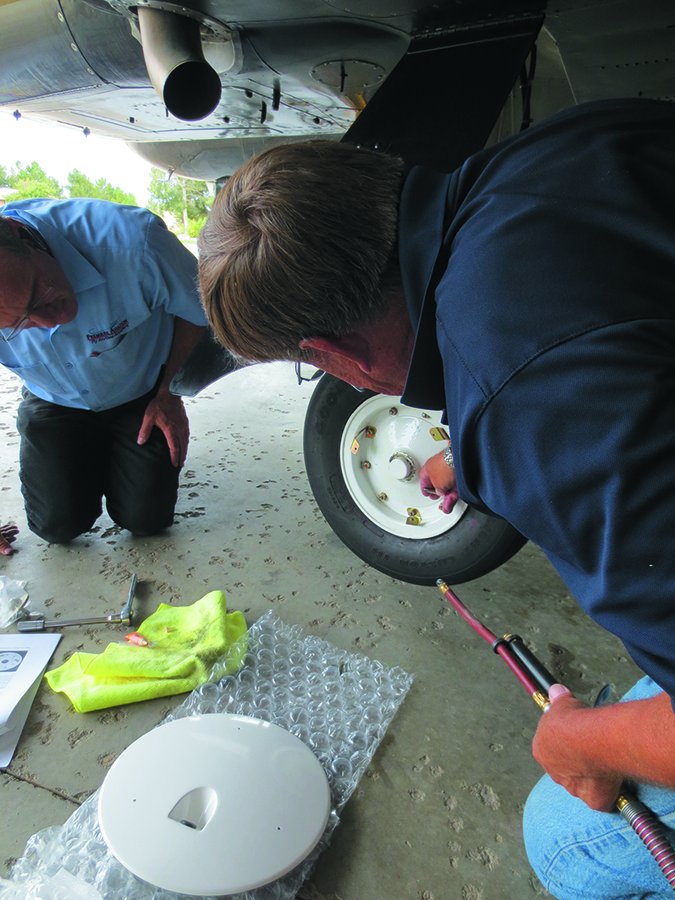
Twin Cessna Speed Covers: Improved Climb and Safety
Premiere Aviation claims that its Speed Covers for the main landing gear of several models of 400-series Cessnas reduce fuel burn 5-10 percent, increase single-engine rate of climb 25 percent and should increase cruise speeds. We recently took Premiere’s Peter Danto up on his offer to flight test the Speed Cover mod. We came away of the opinion that for only $2000 plus two hours installation to get better rates of climb—especially single-engine—the mod’s a slam dunk. We’ll tell you about our flight test after some background.
With over 7000 hours and 30 years flying Cessna 421s, Peter Danto knows the airplanes cold. He used his knowledge to develop a product that could inexpensively reduce a major area of drag on the airplane—the exposed main landing gear wheels. When Cessna had changed from an electro-mechanical to hydraulic landing gear with the development of the models 402C, 414A and 421C, it simplified the system by omitting gear doors for the main landing gear wheels. When it developed the 425 and 441 turboprops it used the same gear design, leaving the main wheels exposed in flight.
The upper photo shows the left main landing gear wheel of a Cessna 421C. The stock wheel has no hubcap. When the gear is retracted each main gear wheel sticks out of the we’ll into the energized slipstream right behind its respective propeller. Danto tufted the entire underside of a 421C wing, flew it and filmed the behavior of the yarn tufts in various flight regimes. The images showed that the main landing gear wheels generated significant turbulence.
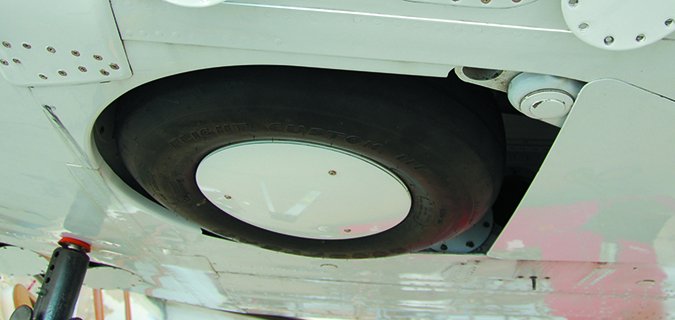
Danto’s solution was to develop slightly convex fiberglass wheel covers to see if they would restore at least some of the laminar flow along the underside of the wing. The lower photo at right shows a Series I Speed Cover on a Cessna 421C with the gear retracted. The view is looking forward.
Flight testing revealed that the Speed Covers reduced drag and resulted in increased rates of climb and higher cruise speeds. Upon completion of the required testing, Danto’s company, Premiere Aviation, applied for and received Supplemental Type Certificates for Speed Covers for the Cessna 402C, 414A and 421C.
The Series I Speed Covers must be removed to add air to the tires. While that only involves three screws, it still takes time, so Danto created the Series II Speed Cover that has an opening for the valve stem and does not have to be removed to service the tire pressure.
Most recently, Premiere Aviation has certified the Series III Speed Cover. It is also certified for the Cessna 425 and 441. It too has an opening for the valve stem, is slightly more convex than the other models and has a greater diameter so that it covers a portion of the tire in addition to the wheel. A Series III Speed Cover is shown in the upper photo at left.
The flight test took place at Parkland Estates Airpark, Erie, Colorado, which has a field elevation of 5050 feet. The airplane was a Cessna 421C owned by Vern Randel. Peter Danto brought a new set of Series III covers to be installed after we had done a baseline test without the covers. The flight profile was for a climb to FL250, level flight for at least five minutes to let the speed stabilize, then a descent to FL200 and level flight for at least five minutes before a descent to landing. The airplane would be flown at the same climb speeds, power settings and fuel flows on both flights. Takeoff weight would be the same. As it happened, OATs at FL250 were within one degree C of each other on the flights.
Time to climb to FL250 for the unmodified airplane was 31:50. Cruise speed at FL250 was 213 KTAS; at FL200 it was 201 KTAS.
The installation of the Speed Covers took 30 minutes. The paperwork included with the kit was, in our opinion, clear and straightforward.
Time to climb to FL250 with Speed Covers installed was 27:45—4:05 faster, a nearly 13 percent improvement. As the airplane climbed, the delta in rates of climb between the flights increased—a 421 tends to run out of puff above FL210—and the modified airplane’s rate of climb was nearly double that of the unmodified airplane above FL200. Speeds at FL250 and FL200 were 214 and 207 KTAS, respectively—nearly identical at FL250 and 6 knots faster at FL200.
We did not shut down an engine for climb comparisons, relying on the video of tests Danto ran earlier and available on the company website.
The price for a set of Series I Speed Covers is $1500; for Series II and III it’s $2000. For an airplane worth we’ll north of $100,000 and the fuel burn of a 400-series Cessna, we think the improved rate of climb and a possible cruise speed increase make the Speed Covers worthwhile. Further tipping the scales, we think a mod that improves the anemic single-engine rate of climb of a piston twin improves its safety.
Gap Seals: Maneuverability Gains
A long-targeted area for aerodynamic cleanup has been the gap between the wing trailing edge and the flaps and ailerons. Engineers thought that by blocking high-pressure air from escaping through the gap to the low-pressure area above the wing overall lift would be increased and the wing could operate at a lower angle of attack, making it faster. Testing showed it to be generally true.
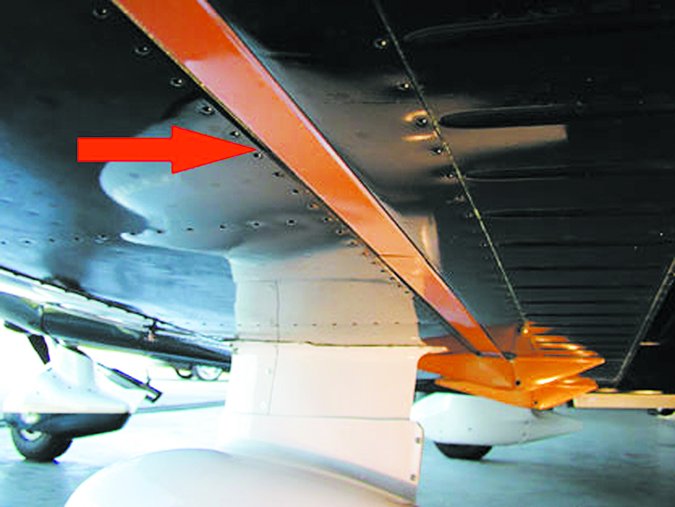
Involved testing by N.A.C.A. (the predecessor to NASA) in 1937—we weren’t kidding about this being a long-targeted area—found the more significant benefit of aileron gap seals: The roll rate increased dramatically.
During research for our March 2014 Aviation Consumer article on gap seals, we were told by Laminar Flow’s Darren Tilman that his testing of aileron gap seals on a Cherokee 140 increased cruise speed by 2-3 MPH; however, they increased the rate of roll by 80 percent at 100 MPH IAS. That’s a huge benefit, in our opinion.
The photo above shows Laminar Flow’s aileron and flap gap seals on a Cherokee. The airplane also has the company’s flap hinge cover and wheel pant speed mods. Prices start at $474 for the seals for a Cherokee at www.laminarflowsystems.com.
The roll rate improvement was also noted by Horton, maker of aileron and flap gap speed mods for Cessnas and Pipers. The Horton representative we spoke with emphasized the improvement in roll rate and handling at low speeds. He said that users reported an increase of at least 2 MPH in cruise speed. For a 172 the price is $349. Installation time is 8-10 hours plus painting.
When it comes to flap gap seals, owners expressed concern about an increase in stall speeds because the seal would interfere with airflow between the wing trailing edge and the flap—especially with Fowler flaps, which move aft and down. All of the companies offering flap seal mods told us that their testing disclosed no change in stall speed.
Curt LoPresti, of LoPresti Aviation, said that its testing showed a 2-3 MPH speed increase for Pipers with flap gap seals and an insignificant gain with aileron gap seals, so it does not even sell aileron gap seals. LoPresti told us to visualize an airplane head-on and noted that the lift distribution on the wing is such that most is generated inboard of the ailerons. Consequently, according to LoPresti, stopping the flow of high-pressure air through the gap has more benefit inboard—which the company’s testing on Pipers confirmed. The flap gap seal kit for a Cherokee 180 is $1495 plus a five-hour installation.
Lasar Aero Styling offers flap and aileron gap seals for a number of Mooneys and advertises a 3.5 MPH speed increase. The price is $505 and installation is said to take 14 hours.
Knots2U offers gap seals for a large variety of the Piper, Beech and Cessna lines and claims speed increases of as much as 5 MPH and rate of climb increases of as much as 75 FPM. Prices start at $500 for a set of flap and aileron gap seals.
D’Shannon offers gap seals for Debonairs, Bonanzas and Barons. Prices start at $600 for a set.
We like aileron gap seals because they improve handling—any incidental speed increase is a bonus.
Conclusion
We like that there is a strong market and competition for most types of airplanes. We think the most bang for the buck lies with landing gear drag reduction on fixed-gear airplanes. We also like the mods for twins that increase single-engine rate of climb.

